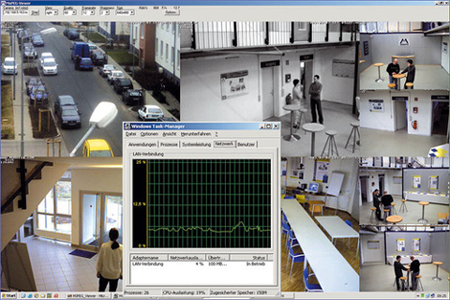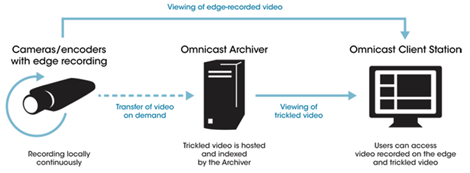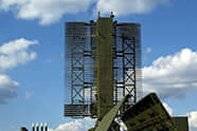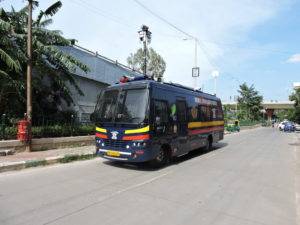Introduction
Wireless IP video surveillance cameras are becoming more popular these days, especially for city-surveillance and mobile surveillance requirements; what with the speed and convenience of installing them, and the decreasing cost of setting up a wireless broadband backhaul. However, wireless devices are more susceptible to changes in ambient operating conditions than wired devices; thus making them more likely to be involved in transmission losses, howsoever fleeting and intermittent.
It is this reputation that has restricted the use of wireless video surveillance cameras in critical surveillance operations, where 24×7 feeds are mandatory. This brief proposes a solution to the above described “dropped signal” issue facing wireless video surveillance cameras.
Edge-Recording
The December 2009 Tech. Brief carried a write-up – Storage Options on IP Surveillance Devices – that described storage options on IP content-capture devices (cameras) and content-recording devices (video recorders – NVR, DVR). Edge-recording refers to the feature of an edge-device (camera) to record content on its local storage medium.
Most IP video surveillance cameras, these days, come with optional on-board storage; either for edge-device analytics or to dispense with the need to connect to a video recorder when the camera is in operation. The on-board storage feature is typically an SD or microSD slot supporting cards of capacities up to 64 GB; but can also be a DAS (USB-based HDD) or NAS appliance directly connected to the camera.
When the edge recording option is enabled, the camera records the content to the on-board storage medium instead of streaming the content directly to its video recorder. Then, depending on the capability of the VMS (Video Management System), the content is uploaded to the associated video recorder at regular time intervals, or is transmitted to the video recorder when the camera’s rules-engine decrees so (for example, whenever motion occurs).
Using edge-recording to resolve the “dropped signal” issue faced in wireless video surveillance infrastructure, entails configuring the camera to store to the on-board storage medium by default, and then upload the stream to the associated video recorder. Even in case there is a break in the connection between the camera and the video recorder, the content is not lost.
Apart from the hardware capability on the camera, edge-recording requires support in the camera’s OS and in the VMS. There are two approaches to edge-recording: Decentralised Video Recording and Video Trickling
Edge-Recording Approaches
The two approaches to edge recording differ in how they view the video recorder in a video surveillance architecture.
Decentralised Video Recording
The approach is best exemplified by the HiRes Video Company, Mobotix. In the decentralised approach, the surveillance architecture dispenses with the central powerful video recorder altogether and the VMS is thrown in free. Instead, the edge-devices (cameras) are the powerhouses of the architecture, and perform the computational work (movement detection, recording, etc.). The cameras only require a standard PC with a monitor, to run the VMS and archive the content.The overall effect is to reduce network load between the cameras and the recorder, and to ensure that there is no loss of content in case of a failure of the network fabric. The two Mobotix visuals, below, illustrate the mechanism of the transmission of content between the camera and the PC, and the low network load of such a mechanism.
 |
 |
| Credit: Mobotix AG, Germany |
Video Trickling
The second approach retains the primacy of the video recorder (and the VMS) in the surveillance architecture, and is merely intended to provide a fall-back in the event the connection between the camera and the video recorder is broken. Genetec is the first company to support video trickling for third-party cameras; on its VMS, Omnicast.In this architecture (schematic below), the camera records to its on-board storage medium, and records to an archiving server. When the connection between the camera and the video recorder is broken, the camera continues to record locally while the archiving server keeps track of the lost connection. When the connection comes on again, the archiving server restarts recording from the point where the connection had broken.
 |
| Credit: Genetec Inc., Canada |
Conclusion
The objective of ensuring recording of video feeds happens 24×7, during breaks in transmission between the cameras and the video recorder, is met with both approaches. The decision on which approach to adopt needs to be based on whether the user wishes to invest in video surveillance hardware just for this feature – in which case the Mobotix solution would be the way to go; or whether the user would like to leverage the existing hardware (with the caveat that the existing hardware is supported by Omnicast) to support this feature – in which case the Genetec solution would be the way to go.
Mistral offers a range of IP surveillance cameras and accessories, across a range of resolutions and features. Mistral can offer third-party solutions that support edge-recording.



